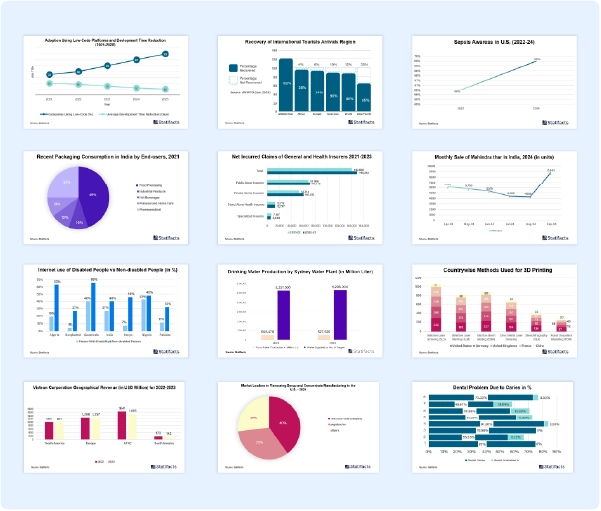The U.S. pharmaceutical water market size accounted for USD 7,090 million in 2024 and is predicted to touch around USD 16,950 million by 2034, growing at a CAGR of 9.11% from 2025 to 2034.
U.S. Pharmaceutical Water Market Report Highlights
- By type, the water for injection type segment dominated the U.S. pharmaceutical water market with the largest share in 2024.
- By type, the HPLC grade water type segment is expected to expand at a rapid pace during the forecast period.
- By application, the pharmaceutical & biotechnology companies application segment accounted for the largest share of the U.S. pharmaceutical water market in 2024.
- By application, the academics and research laboratories application segment is expected to grow fastest during the forecast period.
The U.S. pharmaceutical water market refers to the production, distribution, and application of pharmaceutical water which is prepared using drinking water as feed water and is purified using unit operations that include deionization, distillation, ion exchange, reverse osmosis, filtration, or other suitable procedures. Water for injection is a solvent used in the production of parenteral and other preparations where endotoxin content must be controlled, and in other pharmaceutical applications, water for injection is sterile, non-pyrogenic, distilled water for the preparation of products for parenteral use. This type of water may be used to manufacture drug substances, also known as bulk drugs or bulk pharmaceutical chemicals. It is highly used as a raw material, ingredient, and solvent in the processing, formulation, and manufacture of pharmaceutical products. Purified water with consistent quality helps maintain uniformity in drug formulations and manufacturing procedures, contributing to the reliability of the final product.
In the pharmaceutical industry's production process, water is one of the most used elements, and it is the main component of different formulations, cosmetics, lotions, and other pharmaceutical products. Pharmaceutical-grade water, also called sterile water, is highly purified water that is free from microorganisms, pyrogens, and other contaminants. It is used in a variety of medical applications like IV fluids, injectable medications, and other types of sterile solutions.
Advancements in water purification technologies to ensure compliance with quality and safety requirements drive the growth of the U.S. pharmaceutical water market. Recent advancements in water filtration technologies have led to effective membranes capable of removing a broad range of contaminants from water. These membranes use reverse osmosis and ultrafiltration to separate harmful substances from water, including viruses, bacteria, and dissolved salts. Water purification can help reduce harmful contaminants and also improve the smell, taste, and visual appearance of drinking water. It reduces the amount of organic and inorganic substances, soil residue, and chlorine. Advances in water purification techniques include advanced oxidation and reduction processes, bioremediation, and physical methods based on sorption. The role of technology in improving water quality includes innovations like graphene filters, solar desalination, and forward osmosis, which are making clean water more accessible and energy efficient.
Stricter regulatory standards for water purity drive the growth of the U.S. pharmaceutical water market. According to the U.S. Environmental Protection Agency, water quality standards (WQS) are provisions of state, territorial, authorized tribal, or federal law approved by EPA. Water quality standards are important because they safeguard public health by ensuring that water is safe for drinking, recreation, and other uses. They also protect aquatic life and ecosystems from harmful pollutants. Aquatic organisms, like insects, frogs, snails, and fish, live in water for part or all of their lives. To protect aquatic life and human health, states, territories, and authorized tribes establish water quality standards. The overall goal of water quality statistics is to protect and maintain aquatic ecosystems and the resources those systems provide to society and to accomplish these in an economically and socially sound manner.
The rising demand for injectable drugs and biologics is driving the growth of the U.S. pharmaceutical water market. Water for injection (WFI) and HPLC-grade water are projected to witness strong demand because of the growing emphasis on ensuring sterility and purity in pharmaceutical products. The rising prevalence of chronic diseases and the expansion of injectable drug manufacturing are expected to increase WFI demand. Water for injection (WFI) is a sterile water used for the manufacturing of pharmaceutical products that are administered parenterally, ophthalmically, or inhaled. WFI is also used for cell culture growth media, washing, and rinsing bioreactors in fast-growing biological therapies. Pharmaceutical water is used in the preparation of all medications containing water except ampoules, injections, and some external preparations like liniments. Pharmaceutical water must meet the needs for iconic and organic chemical purity and must be protected from microbial contamination.
- In May 2024, Magnesium sulfate in water for injection in the United States as approved by the U.S. Food and Drug Administration was launched by Avenacy, a specialty pharmaceutical company focused on supplying critical injectable medications.
Avenacy’s Magnesium Sulfate in Water for Injection is available in Ready-to-use Premix IV bags in multiple formulations: 2g/50 mL (40mg/mL), 4g/100 mL (40mg/mL), and 4g/50 mL (80mg/mL)

